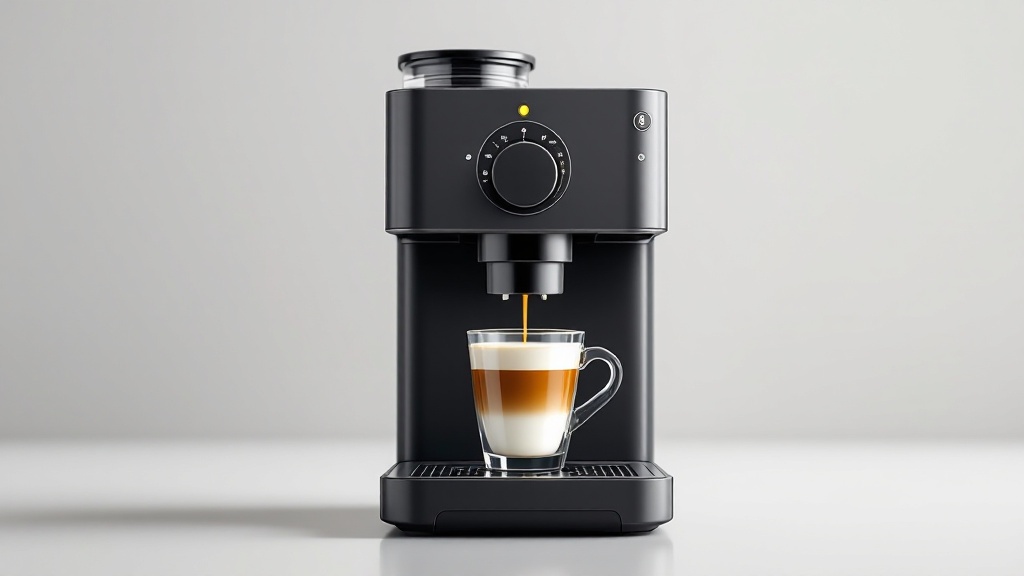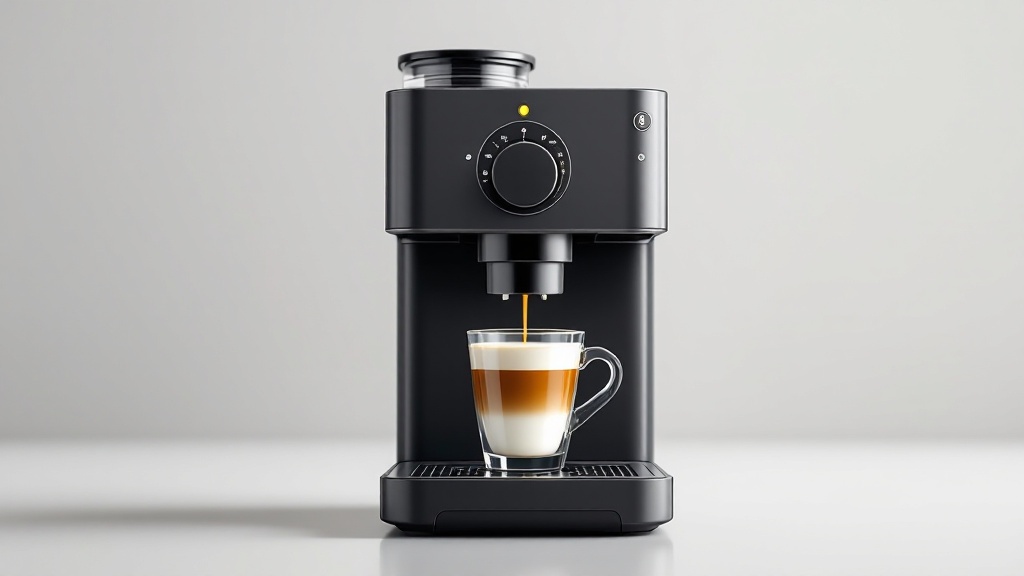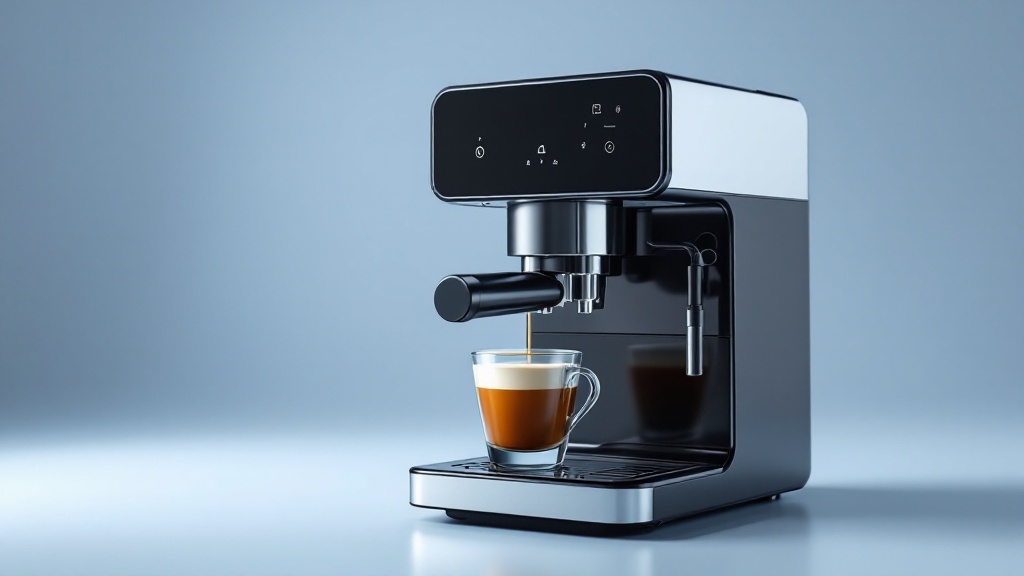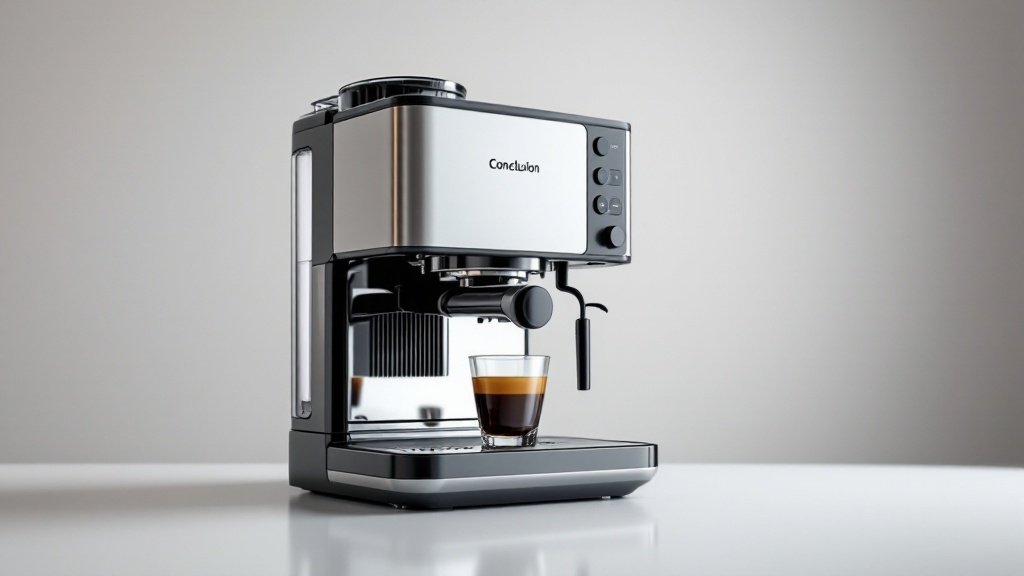What is a Cortado?

The cortado, a beloved classic originating from Spain (specifically the Basque region), is a harmonious blend of rich espresso and velvety steamed milk. This perfectly balanced beverage is small, strong, and incredibly smooth, making it an ideal choice for those who appreciate the intensity of espresso but crave a more approachable, less acidic experience.
| Aspect | Cortado | Comparison |
|---|---|---|
| Origin | Spain (Basque region) | Originated in Spain, unlike cappuccino (Italy) or latte (USA/Europe). |
| Ingredients | Espresso + Steamed Milk (1:1 ratio) | Less milk than a latte, more milk than a macchiato. |
| Flavor Profile | Strong, smooth, less acidic | Balanced intensity, milder than straight espresso but bolder than a latte. |
| Serving Size | Small (typically 4-6 oz) | Smaller than a latte or cappuccino, making it more concentrated. |
| Ideal For | Espresso lovers seeking a smoother experience | Perfect for those who want espresso strength without overwhelming acidity. |

Espresso-to-Milk Ratio
The cortado’s defining characteristic is its precise 1:1 ratio of espresso to steamed milk, a configuration that distinguishes it from other espresso-based beverages. This ratio is achieved by combining a single shot of espresso (approximately 30-40ml) with an equal volume of steamed milk, typically heated to 60-65°C (140-149°F). The milk is steamed to a microfoam consistency, which integrates tiny air bubbles into the liquid, creating a smooth, velvety texture without the frothiness of a cappuccino or latte. This balance ensures the espresso’s bold flavor remains prominent while the milk softens its acidity and adds a creamy mouthfeel.
Optimal Espresso-to-Milk Balance
- Standard cappuccino ratio: 1:2 (espresso to milk).
- Flat white ratio: 1:3, emphasizing creamier texture.
- Macchiato uses 1:1, with a dollop of foam.
- Adjust ratios for personal taste or bean strength.
- Use a scale for precise measurements in specialty coffee.
- Darker roasts pair well with higher milk ratios.
Key Characteristics of the Cortado

Origin and Meaning
The name “cortado” stems from the Spanish verb “cortar,” meaning “to cut.” This aptly describes how the addition of steamed milk tempers the espresso’s inherent acidity, creating a more balanced flavor profile.
“A cortado’s magic lies in its 1:1 ratio–espresso and steamed milk unite for bold flavor with velvety smoothness.”
– James Hoffmann, World Barista Champion and Coffee Author
| Beverage | Espresso-to-Milk Ratio | Key Characteristics |
|---|---|---|
| Cortado | 1:1 | Equal parts espresso and steamed milk; smooth, velvety texture with prominent espresso flavor. |
| Cappuccino | 1:2 | More milk than espresso; frothy texture with a balance of espresso and milk flavors. |
| Flat White | 1:3 | Higher milk ratio; creamier texture with a focus on steamed milk over espresso. |
| Macchiato | 1:1 (with foam) | Equal parts espresso and milk, but with a dollop of foam; stronger espresso flavor. |
Cultural and Linguistic Roots
- The cortado originated in Spain and is widely popular in Latin America, particularly in Cuba and Portugal.
- In Portugal, it is known as “galão” when served in a larger glass with more milk.
- The drink’s name reflects its preparation method, emphasizing the “cutting” of espresso with milk.
- Unlike a latte, a cortado typically uses a 1:1 ratio of espresso to steamed milk, maintaining a stronger coffee flavor.
- It is often served in a small glass or ceramic cup, highlighting its simplicity and focus on balance.
Ratio and Texture
A true cortado maintains a precise 1:1 ratio of espresso to steamed milk, typically around 1-2 ounces of each. The milk is steamed to a silky, velvety texture, devoid of the froth or foam found in other coffee drinks like cappuccinos or lattes.
Perfecting the Cortado
- Use whole milk for the creamiest texture, though alternatives like oat or almond milk can be used for a dairy-free option.
- Steam milk to a temperature of 140-150°F to achieve the ideal silky consistency without scalding.
- Serve in a small Gibraltar glass to maintain the drink’s traditional presentation and temperature.
- Pair with a single-origin espresso for a nuanced flavor profile that complements the milk’s sweetness.
- Avoid over-steaming, as it can introduce unwanted foam, disrupting the cortado’s signature smooth texture.
Serving Size and Variations
This delightful beverage is served in a small glass or cup, usually ranging from 4-6 ounces. Several delicious variations exist, including the
Cortado Condensada
(using sweetened condensed milk), the
Cortadito
(a Cuban variation with sweetened espresso and evaporated milk), and the
Leche y Leche
(featuring layers of condensed and steamed milk).

Popular Cortado Variations
- Cortado Condensada: Combines espresso with sweetened condensed milk for a rich, creamy texture.
- Cortadito: A Cuban twist featuring sweetened espresso and evaporated milk, often topped with foam.
- Leche y Leche: Layers condensed milk and steamed milk for a visually striking and indulgent drink.
- Gibraltar: A popular variation served in a 4.5-ounce glass, named after the glassware used.
- Piccolo Latte: An Australian variation with a higher milk-to-espresso ratio, served in a 3-4 ounce glass.
Espresso-to-Milk Ratio Precision
The 1:1 espresso-to-milk ratio in a cortado is a critical technical parameter that defines its flavor and texture. This precise balance ensures that the steamed milk effectively “cuts” the espresso’s acidity without overpowering its robust flavor. The ratio is typically measured by volume, with each component ranging between 1-2 ounces. This exact measurement is essential to maintain the cortado’s identity, distinguishing it from similar beverages like macchiatos (which have less milk) or flat whites (which have more). Baristas often use calibrated shot glasses or scales to achieve this consistency, ensuring the espresso and milk are measured accurately before combining.
Perfecting Espresso-to-Milk Balance
- Use a 1:2 ratio for a classic cappuccino (1 part espresso to 2 parts steamed milk).
- For a latte, aim for a 1:3 ratio to achieve a creamier, milk-forward flavor.
- Measure milk by weight for consistency, as volume can vary with frothing.
- Adjust ratios based on bean roast-darker roasts pair well with slightly more milk.
- Experiment with ratios to suit personal taste, but maintain precision for repeatability.
How to Make a Cortado at Home

Ingredients
- 1 shot of espresso (1-2 ounces)
- Equal amount of steamed milk (1-2 ounces)
Key Ingredient Details
- Use fresh, organic produce for optimal flavor and nutrition.
- Substitute dairy-free alternatives like almond milk for lactose intolerance.
- Include spices such as turmeric or cumin for added health benefits.
- Choose whole-grain options like quinoa or brown rice for extra fiber.
- Opt for lean proteins like chicken breast or tofu to reduce fat content.
- Incorporate seasonal ingredients to enhance freshness and cost-effectiveness.
Equipment
- Espresso machine or Moka pot
- Milk steamer or frother
- Small cup or glass
Essential Equipment Checklist
- High-quality safety gear, including helmets and gloves, is mandatory for all participants.
- Ensure all tools, such as wrenches and drills, are in good working condition before use.
- Portable first aid kits must be accessible at all times during operations.
- Use calibrated measuring instruments, like laser levels, for precision tasks.
- Regularly inspect and maintain heavy machinery, such as forklifts, to prevent malfunctions.
- Provide personal protective equipment (PPE) tailored to specific tasks, such as welding masks or ear protection.
Steps
Brew Espresso:
Pull a single shot of espresso using your preferred method. Aim for 1-2 ounces of rich, dark liquid gold.
Steam Milk:
Heat your milk to between 140-155°F (60-68°C) using a milk steamer or frother. The key is to achieve a smooth, velvety texture; avoid creating any foam.
Combine:
Gently pour the steamed milk into the espresso shot, maintaining the 1:1 ratio.
Serve:
Immediately enjoy your perfectly crafted cortado while it’s still hot.

Key Implementation Steps
- Identify and prioritize tasks based on urgency and impact to streamline execution.
- Assign clear roles and responsibilities to team members to ensure accountability.
- Set measurable milestones and deadlines to track progress effectively.
- Conduct regular check-ins to address challenges and adjust plans as needed.
- Document each step to create a reference for future projects or audits.
- Celebrate milestones to boost team morale and maintain momentum.
Espresso-to-Milk Ratio
The cortado is defined by its precise 1:1 ratio of espresso to steamed milk, a balance that distinguishes it from other espresso-based beverages. This ratio ensures that the bold, concentrated flavors of the espresso are softened by the milk without being overwhelmed. The espresso, typically brewed at 9 bars of pressure, delivers a rich, complex flavor profile with notes of caramel, chocolate, or fruit, depending on the bean’s origin and roast. The steamed milk, heated to 140-155°F (60-68°C), is incorporated to achieve a silky texture without introducing foam, which would alter the drink’s intended mouthfeel and flavor balance.
Optimal Espresso-to-Milk Ratios
- Traditional cappuccino uses a 1:2 ratio (1 part espresso to 2 parts steamed milk).
- Flat whites typically have a 1:3 ratio for a creamier texture and stronger coffee flavor.
- For a latte, aim for a 1:4 ratio to balance espresso with a larger milk volume.
- Macchiatos use a 1:1 ratio, with a small amount of milk to highlight the espresso.
- Adjust ratios based on cup size: smaller cups require less milk to maintain flavor intensity.
- Experiment with ratios to suit personal taste preferences, such as a stronger or milder coffee profile.
Tips, Tricks, and Variations

Tips for the Perfect Cortado
- Use high-quality, freshly roasted espresso beans for optimal flavor.
- Adhere to the 1:1 ratio for that perfect balance of coffee and milk.
- Avoid overheating the milk; it can lead to a burnt taste.
- Experiment with different milk types (whole milk, oat milk, almond milk) to find your personal preference.
Mastering Cortado Preparation
- Use freshly roasted espresso beans for a rich, balanced flavor profile.
- Steam milk to 130-140°F to achieve a silky texture without scalding.
- Maintain a 1:1 ratio of espresso to steamed milk for the classic cortado taste.
- Preheat your cup to keep the drink warm and enhance the aroma.
- Experiment with alternative milks like oat or almond for a unique twist.
- Serve immediately to preserve the layered texture and temperature.
Popular Variations
Beyond the classic recipe, explore the exciting world of cortado variations: the sweeter
Cortado Condensada
, the richer
Cortadito
, and the layered delight of
Leche y Leche
. Each variation offers a unique twist on this already captivating beverage.
“The secret to a perfect cortado lies in the 1:1 espresso-to-milk ratio–balance bold espresso with silky steamed milk, no foam.”
– James Hoffmann, World Barista Champion and Coffee Author
Unique Cortado Variations Explained
- strong>Cortado Condensada: Sweetened with condensed milk, this version is popular in Latin America and offers a creamy, dessert-like flavor.
- strong>Cortadito: A Cuban specialty, often made with a shot of espresso and steamed milk, sometimes sweetened with sugar for a richer taste.
- strong>Leche y Leche: Features a layered mix of condensed milk and evaporated milk, creating a decadent, velvety texture.
- strong>Gibraltar: A smaller, stronger version served in a Gibraltar glass, popular in specialty coffee shops.
- strong>Cortado Oscuro: Uses a higher ratio of espresso to milk, appealing to those who prefer a bolder coffee flavor.
Optimal Milk Steaming Techniques
Steaming milk for a cortado requires precise temperature control to achieve the ideal microfoam texture. The target temperature range for steamed milk is between 55°C (131°F) and 65°C (149°F). Exceeding this range can denature the milk proteins, resulting in a burnt or overly sweet flavor. To achieve the perfect microfoam, position the steam wand just below the surface of the milk at a slight angle, creating a vortex. This technique incorporates air evenly, producing a velvety texture essential for a balanced cortado.
Mastering Milk Steaming Basics
- Use cold, fresh milk (ideally whole milk) for the best texture and sweetness.
- Position the steam wand just below the milk’s surface to create a smooth microfoam.
- Maintain a consistent temperature between 140°F and 155°F to avoid scalding.
- Purge the steam wand before and after use to prevent milk residue buildup.
- Swirl the milk gently after steaming to integrate foam and liquid evenly.
- Practice proper pitcher angles (45 degrees) for optimal steam wand control.
The Benefits of Enjoying a Cortado

The cortado provides more than just a delicious coffee experience; it offers several noteworthy benefits:
Balanced Flavor:
The perfect 1:1 ratio ensures a harmonious blend of espresso boldness and creamy milk smoothness.
Smooth Texture:
The absence of foam results in a luxurious, velvety mouthfeel.
Customizable:
Easily adapt the recipe using your favorite milk or flavor additions.
Quick Preparation:
Ready in just 5-10 minutes, making it a convenient coffee option.
Strong Yet Mellow:
Ideal for those who appreciate espresso strength without the potential bitterness.
So, embark on your cortado journey today! Experiment with variations, and discover your perfect cup.
Espresso-to-Milk Ratio Optimization
The cortado’s defining characteristic is its precise 1:1 ratio of espresso to steamed milk, a configuration that ensures optimal flavor balance and texture. This ratio is critical because it maintains the espresso’s intensity while softening its acidity and bitterness with the milk’s natural sweetness. The espresso, typically extracted at a 1:2 ratio of coffee grounds to water (e.g., 18g of coffee yielding 36g of espresso), provides a concentrated base. The steamed milk, heated to 60-65°C (140-149°F), is added in equal parts to create a harmonious blend. This temperature range is ideal, as it prevents scalding the milk, which can introduce unwanted burnt flavors, while still achieving a smooth, velvety texture.
Perfecting Espresso-to-Milk Balance
- Use a 1:2 ratio for a classic cappuccino, blending bold espresso with creamy steamed milk.
- For a latte, aim for a 1:3 ratio to achieve a smoother, milk-forward flavor profile.
- Adjust ratios based on bean roast-darker roasts pair well with less milk to avoid overpowering flavors.
- Experiment with milk types (e.g., oat, almond) to complement espresso’s intensity and acidity.
- Measure espresso (30ml) and milk (60-90ml) precisely for consistent results across servings.
- Consider cup size-smaller cups (150ml) suit stronger ratios, while larger cups (250ml) work with milder blends.
Conclusion

In essence, the cortado is a testament to the art of balance in coffee. Its defining characteristic—the precise 1:1 ratio of espresso to velvety microfoam milk—is what sets it apart. This simple yet elegant ratio isn’t just about aesthetics; it’s the key to unlocking a harmonious blend where the rich, intense espresso notes are beautifully complemented and subtly softened by the creamy texture of the milk, resulting in a drink that is both strong and approachable. From its Spanish origins and the meaning behind its name (“to cut”), to the various delicious variations, the cortado offers a nuanced and rewarding coffee experience.
The journey to the perfect cortado involves mastering the art of espresso extraction and milk steaming. Achieving the ideal temperature and texture for the milk is crucial, ensuring a silky smooth mouthfeel without compromising the espresso’s bold flavor. While seemingly simple in its composition, the cortado’s execution requires precision and skill. Understanding the subtle nuances of this ratio and technique allows for a truly exceptional cup. Whether you’re a seasoned barista or a coffee enthusiast at home, mastering the cortado is a rewarding pursuit.
So, are you ready to experience the magic of the cortado? We encourage you to try making one yourself, experimenting with different beans and milk types to discover your perfect combination. Whether you savor the classic recipe or venture into the exciting world of variations like the Cortado Condensada or Cortadito, the cortado promises a sophisticated and delightful coffee journey. Embrace the balance, appreciate the precision, and savor every sip!

